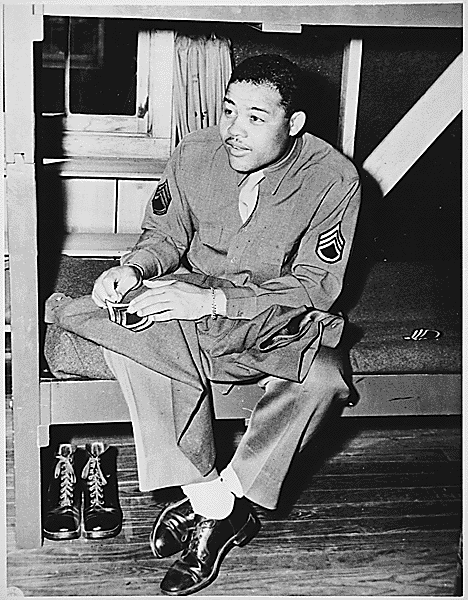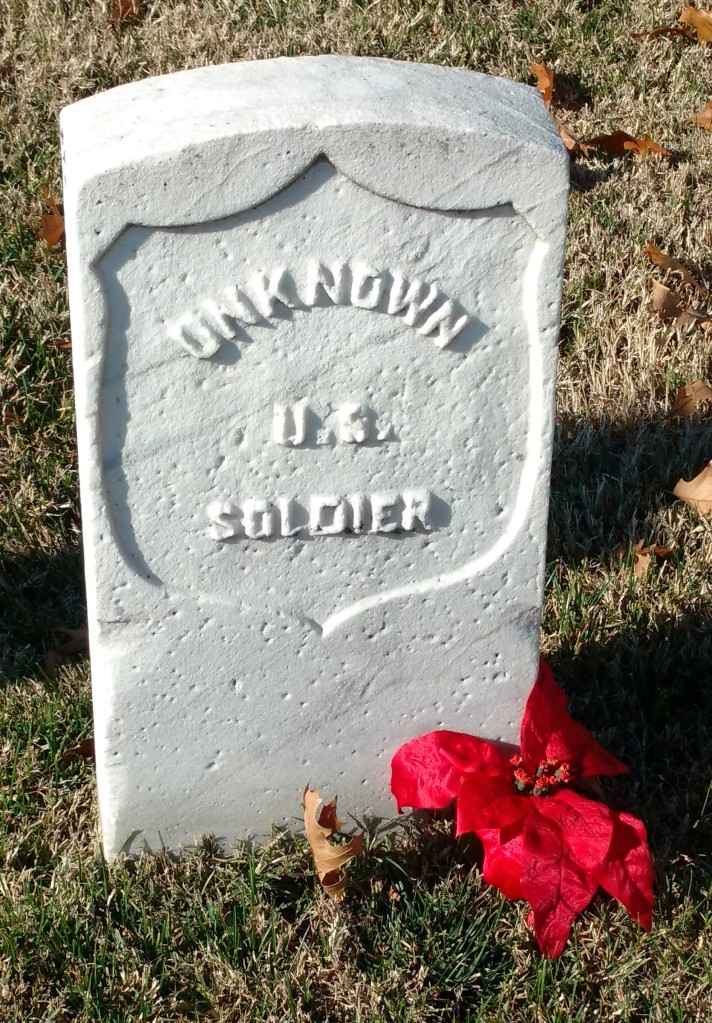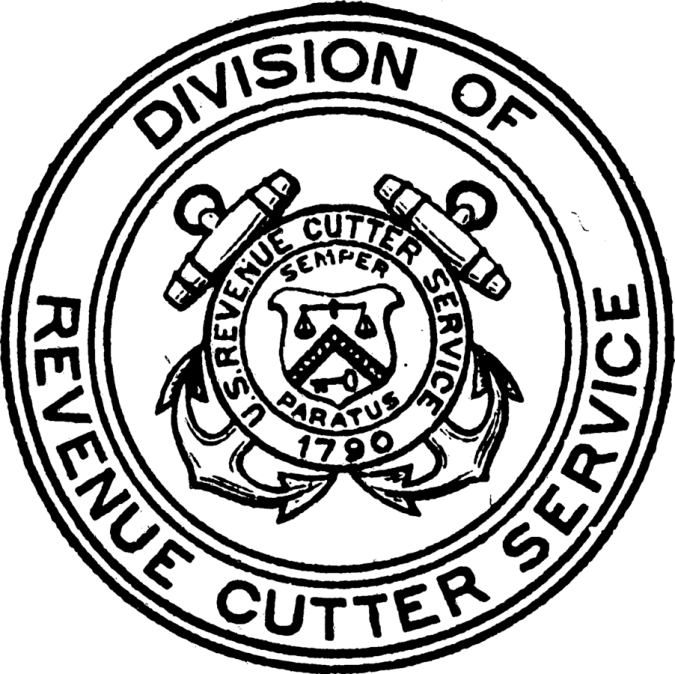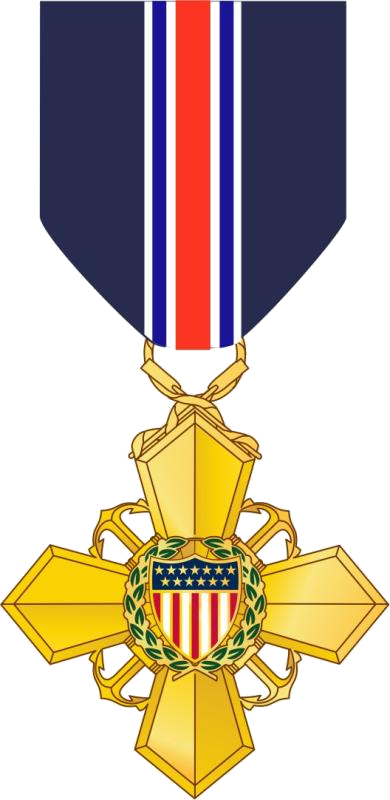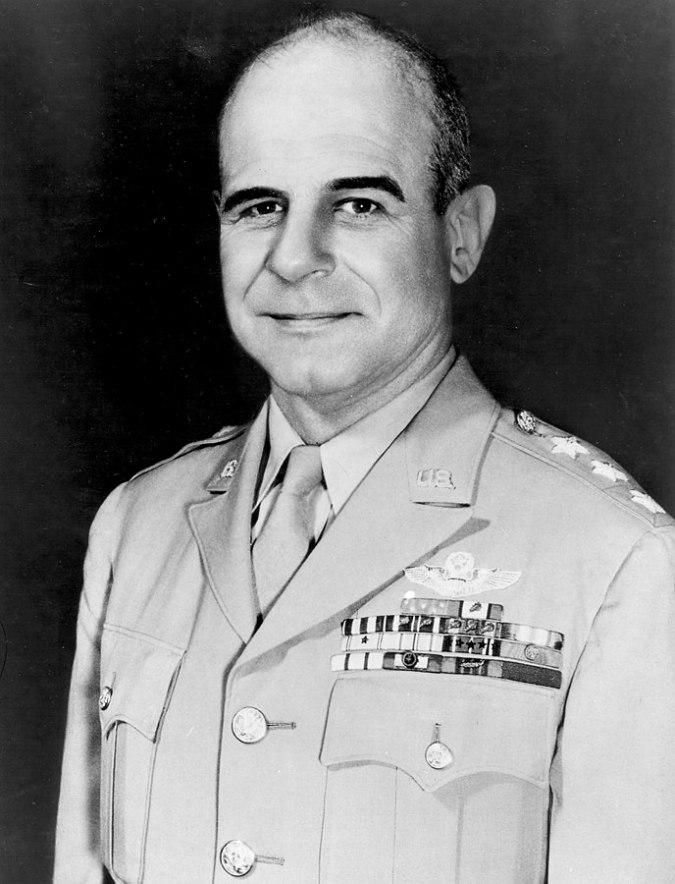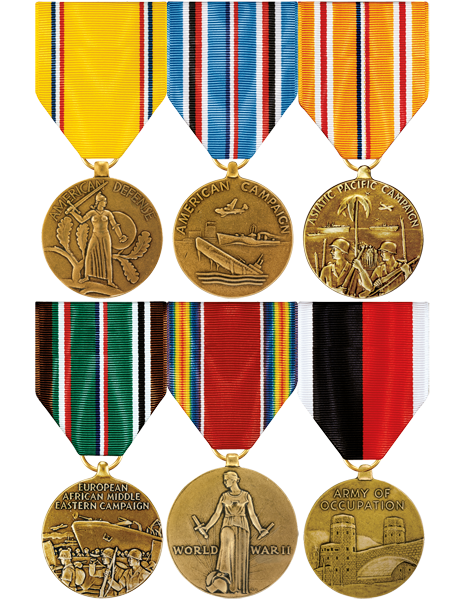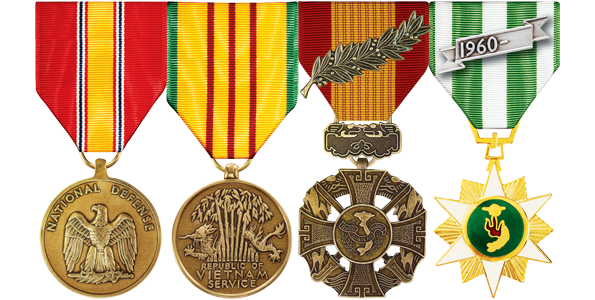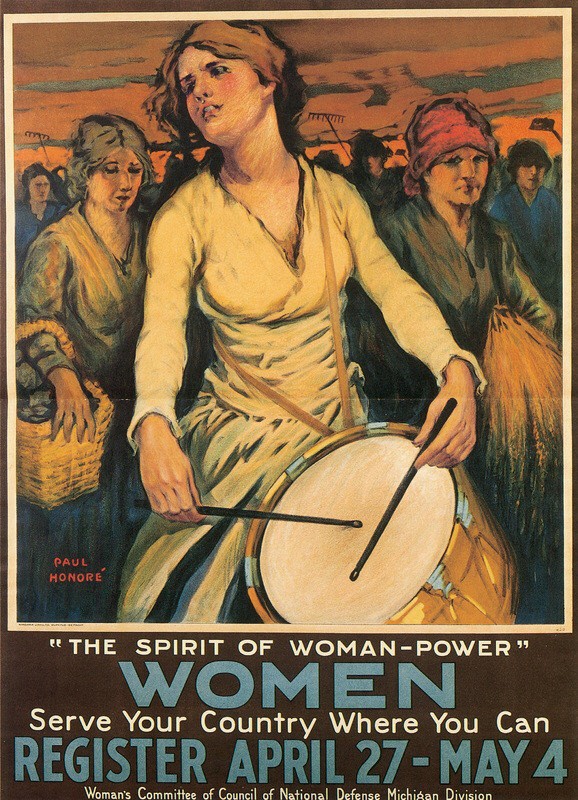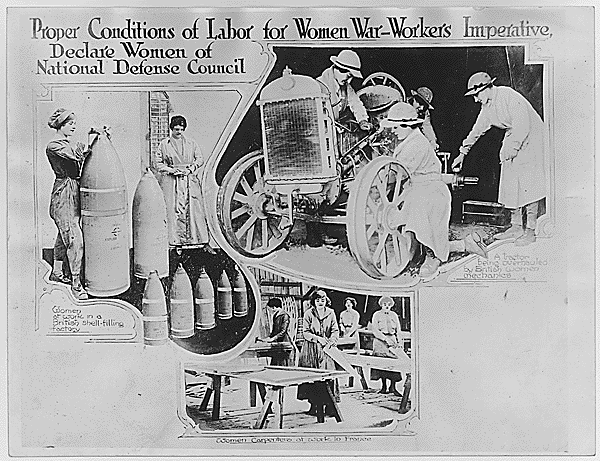The history of the U.S. Navy and Marine Corps is incredibly dense and overflowing with heroic stories of men battling the elements, fighting enemies in exotic locales, and being ready to deploy anywhere in the world at a moment’s notice. Towering ships like the USS Constitution, USS Missouri, USS Arizona, and the USS Hornet were at the center of momentous historical events that defined generations and military tradition. An illustrious history can even be heard in the Marines’ Hymn:
“From the Halls of Montezuma
To the shores of Tripoli;
We fight our country’s battles
In the air, on land, and sea;
First to fight for right and freedom
And to keep our honor clean;
We are proud to claim the title
Of United States Marine”
(The ‘Halls of Montezuma’ refers to the Battle of Chapultepec in the Mexican-American War and the ‘shores of Tripoli’ refers to the Battle of Derne in the First Barbary War). The Continental Congress quickly established both the Navy and Marine Corps during the American Revolution to counter the British Navy, which was the largest in the world during the 18th century. Since the early 1800s, the Navy and Marine Corps were engaged in conflicts throughout the world. Despite their operations during the War of 1812, American Civil War, the Spanish-American War, and many other global conflicts, Navy and Marine Corps awards and decorations were established primarily after World War I and World War II.

The USS Constitution battling the HMS Guerriere in the War of 1812. The USS Constitution’s victory earned it the nickname ‘Old Ironsides’ (image courtesy of the U.S. Naval Historical Center)
The U.S. Navy and Marine Corps share a special distinction in the U.S. Armed Forces and other uniformed services: their medals are shared and awarded to both members of each branch. What many people don’t realize is that the Marine Corps is under the jurisdiction of the Department of the Navy (and the U.S. Navy is within the same department of course). On June 30, 1834, the Marines were combined with the Navy following an Act of Congress; ‘Act for the Better Organization of the Marine Corps‘:
“…That the said corps shall, at all times, be subject to, and under the laws and regulations which are, or may hereafter be, established for the better government of the Navy, except when detached for service with the Army, by order of the President of the United States.”
-An Act for the better organization of the Marine Corps, Statute I, Chapter CXXXII, Sec 2, Twenty-Third Congress, June 30, 1834
Although the Navy and Marine Corps share the same medals, a substantial amount of research is performed to verify awards and decorations requests. This is due to the fact that geographic assignments and time served on ships plays a significant part in determining awards. Naval ships earn what are called Battle Efficiency Awards that are given for best battle efficiency competition and overall readiness for naval operations. A common request that Navy veterans make are for ship awards they believe are eligible for; if they served on the ship when it received that award though. A number of retroactive awards, especially for WWII and Korea, are available too through recent general orders from the Department of the Navy.
Let’s look at some unique medals and awards issued by the Department of the Navy:
- Navy Cross: second highest award for valor in combat, equal to the Distinguished Service Cross and the Air Force Cross
- Navy and Marine Corps Medal: awarded for non-combat heroism equal to the Soldier’s Medal and the Airman’s Medal
- Navy / Marine Corps Expeditionary Medal: awarded to active duty personnel who landed in foreign territory and engaged the enemy
- Combat Action Ribbon: awarded to sea service members who engaged in ground or surface combat against the enemy. *This is the most commonly requested award for both service branches*
- Sea Service Deployment Ribbon: awarded to those serving active duty onboard a vessel at sea. *Established in 1980, it is only retroactive to August 15, 1974 so any requests for the SSDR before that date are denied*
- Navy E Ribbon: awarded for battle efficiency competitions for readiness and overall preparedness for that vessel and crew
The Navy and Marine Corps also issue Achievement and Commendation awards as mentioned previously in the preceding articles. Appurtenances like service stars, oak leaves, and numerals are also used along with another one called the Fleet Marine Force Combat Operations Insignia. This is issued to U.S. Navy sailors attached to Marine Corps units engaged in combat operations. Both branches also have a system of weapon marksmanship awards for different weapon types.
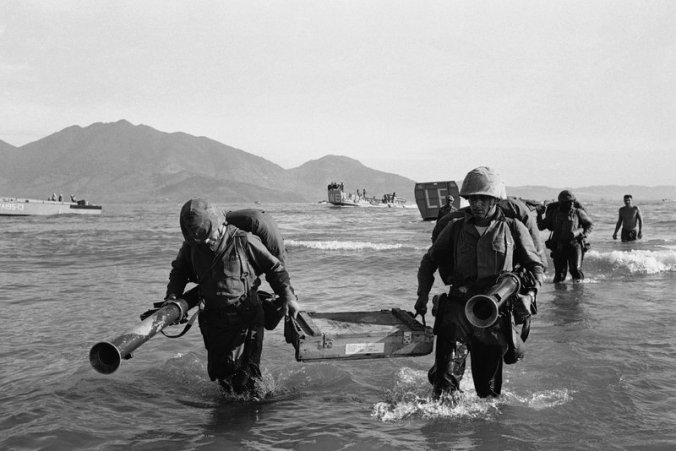
The 3rd Battalion, 9th Marines landing at Da Nang. They were the first US ground combat troops to land in Vietnam on March 8, 1965 (photo courtesy of the U.S. Marine Corps History Division)
As any technician at the National Personnel Records Center will tell you, fulfilling requests for Navy and Marine Corps awards is a labor intensive process. This is because of the numerous resources that technicians use to cross-check where a service member was located, at what time, with what unit or vessel, and length of time overseas or deployed on a ship. Individual personnel records may not completely reflect the award history of a vessel so they are checked against a massive ledger of all ship and unit awards garnered by that vessel. For World War II, Korea, and Vietnam veterans in particular, this is combined with their eligibility for foreign awards if (and this is a big IF) they were assigned to ships that were in the sovereign waters of a country where combat actions occurred. Ledgers for Presidential, Meritorious, and Navy Unit Commendations are extensive because they track every deployment and combat action of each vessel. The same goes for the Marine Corps; their deployments and attachments to specific units and ships are heavily reviewed to see whether or not they’re eligible for awards also. Additionally, combat air wings with the Navy and Marine Corps are also separated with their awards determination. A naval combat air wing can receive an award, but the aircraft carrier transporting them doesn’t necessarily receive the same. This unit stratification is important to remember when Navy and Marine Corps veterans request their medals. If you weren’t attached to a unit or ship that received an award for being in a specific time or place, then you wouldn’t be considered eligible.
Before delving into the finer details of the Navy and Marine Corps awards themselves, it’s imperative to look at the request process as well. Similar to the Army and Air Force, requests are made through the NPRC and information is verified through the personnel folder. The Navy and Marine Corps also use a form similar to the Air Force’s NA 13059 entitled a NAVPERS 1650/96 ‘Transmittal of and/or entitlement to Awards’. Replacements are also only issued once like the Air Force and so copies of this form are put in the record and then sent to the service branch office. The Navy Personnel Command in Millington, Tennessee is responsible for the verification and replacement of Navy and Marine Corps awards.

The U.S. Navy light aircraft carrier USS Princeton (CVL-23) burning soon after she was hit by a Japanese bomb while operating off the Philippines on October 24, 1944 (Photo courtesy of the Naval History and Heritage Command)
A large number of requests for Navy and Marine Corps medals comes from World War II veterans and their families. This time period requires a significant amount of research because ships, combat air wings, and Marine Corps units attached to naval units all have a multiple lists and information to verify. Veterans who served in the Pacific Theater are eligible for awards like the Philippines Presidential Unit Citation, Combat Action Ribbons, the Asiatic-Pacific Campaign Medal, Navy Occupation Medal, and the China Service Medal (given for service in waters near China between 2 September 1946 and 1 April 1957). Once a technician confirms the veteran’s on-board service, that is cross checked against that ship’s unit award history and if nothing is found, that request is complete! The same process is repeated for Korea and Vietnam veterans.
Marine Corps award requests are examined in nearly the same manner. A master list of every Marine Corps unit since the Korean War shows their unit awards, combat actions, and corresponding time frames to prove eligibility. When Marine Corps units are attached with other units that receive awards, the aforementioned Marine Corp unit receives the same unit award. Again, time and place makes a major difference in determining awards eligibility. One final, yet important disclaimer I should add here is that the NPRC only processes awards requests for veterans how have their records at the record center. Beginning in the mid-1990s, the Navy and Marine Corps began digitizing and retaining their own service records.
Let’s look at an example! Assume that all the supporting documentation exists for the veteran’s request for all entitled medals and awards:
- Enlisted in the U.S. Navy on January 5, 1943
- Served on the USS Denver from 1 October 1944 to 30 November 1945
- Stationed in Japan following surrender in September 1945
Here’s what we’ve got! From left to right, top to bottom:

- Combat Action Ribbon: participated in combat against the enemy during the Battle of Leyte Gulf
- Navy Unit Commendation: received for serving on board the USS Denver during the Battle of Leyte Gulf
- Asiatic-Pacific Campaign Medal with bronze service star: service in the Pacific Theater
- World War II Victory Medal: active duty between 7 December 1941 to 31 December 1946
- Navy Occupation Medal: stationed in occupied Axis country, Japan
- Philippine Presidential Unit Citation: meritorious service in the Pacific Theater and actions in the Philippines
- Philippine Liberation Medal: participated in the liberation of the Philippine Islands from Japanese forces
Now let’s look at a Marine Corps example. Again, assume that all the supporting documentation exists in the personnel folder:
- Enlisted in the U.S. Marine Corps on 10 June 1964
- Served in Vietnam with the 1st Battalion, 4th Marines from 30 August 1965 to 15 November 1966
- Participated in Operation Prairie and Deckhouse
- Wounded once in combat
- Received a commendation for heroic acts
Here’s what we’ve got! From left to right, top to bottom:

- Purple Heart: sustaining wounds during combat
- Navy and Marine Corps Commendation: for heroic acts performed during combat operations
- Combat Action Ribbon: participated in combat operations against the enemy
- National Defense Service Medal: for active duty service during a conflict
- Vietnam Service Medal with one bronze service star: received for serving in the Republic of Vietnam
- Republic of Vietnam Cross of Gallantry with Unit Palm Citation: received the foreign unit award for being attached to the 1st Battalion, 4th Marines while serving in Vietnam
- Republic of Vietnam Campaign Medal with 1960 device: foreign award for serving in Vietnam
These examples are not meant to be 100% accurate, but they are to give a general conception of what typical awards are eligible for Navy and Marine Corps veterans. For more information on Navy and Marine Corps awards and decorations, you can visit the Navy Personnel Command website here: Navy Personnel Command.
I hope this article series on U.S. Armed Forces awards and decorations has been informative and helpful! You can also visit the National Personnel Records Center website to begin the request process for medals (NPRC website). Happy researching!
